When trust feels uncertain, modern science offers clarity. Advanced DNA testing now provides discreet ways to verify suspicions using everyday items. Whether you’re noticing unusual behavior or unexplained evidence, these tools deliver answers with lab-grade precision.
Today’s state-of-the-art kits analyze genetic material from clothes, bedding, or personal items. Labs compare these samples against reference profiles to confirm matches. This approach works equally well for male and female subjects, ensuring no one is excluded from finding truth.
You can order a kit online and collect samples at home without awkward conversations. The process is simple: mail your items to certified labs, and receive confidential results within days. No lab visits or complex steps—just reliable answers.
Beyond physical proof, emotional red flags often accompany questionable situations. We’ll explore how combining behavioral cues with DNA test results creates a fuller picture. From understanding reports to protecting privacy, this guide walks you through every step.
Ready to take control? Let’s break down how forensic-grade testing works, what to expect from results, and how to move forward with confidence.
Understanding Infidelity and Its Indicators
Have you noticed subtle shifts in your partner’s routine or unexplained items around your home? These could be clues worth exploring. While trust forms the foundation of relationships, sudden secrecy or uncharacteristic habits often spark valid concerns.
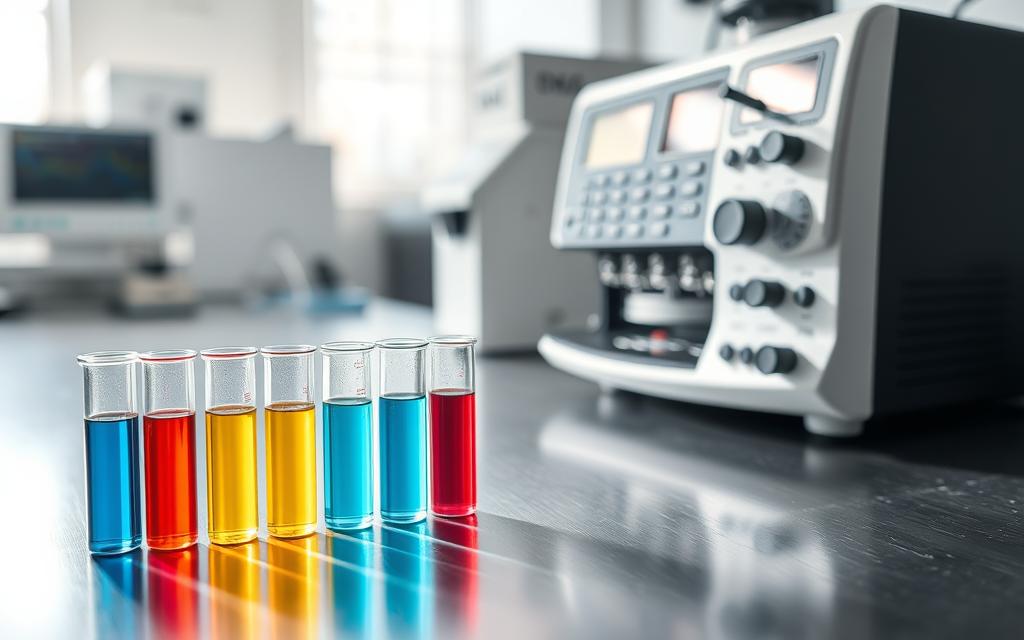
Recognizing Behavioral and Physical Signs
Sudden phone password changes or extended “work trips” may raise eyebrows. Physical evidence like unfamiliar clothing fibers or stains on sheets can also hint at hidden activity. Trust your instincts—these inconsistencies often signal deeper issues.
Unexpected items, such as a stray hair or personal belongings not matching your household, become critical pieces of evidence. Modern DNA testing allows discreet comparison of these samples against known profiles. This removes guesswork by providing biological confirmation.
Common Symptoms of Adultery
Emotional distance or defensiveness about certain topics often accompanies secretive behavior. While these signs aren’t proof, they highlight when tests might provide clarity. Combining observed patterns with scientific analysis creates actionable insights.
Home-based DNA test kits simplify evidence collection. You can mail suspicious items to labs for confidential results within days. Whether confirming or easing doubts, this approach delivers factual answers to sensitive questions.
Infidelity Detection Methods: Exploring DNA Testing
Modern forensic science brings lab-grade precision to everyday concerns. Specialized DNA testing now identifies biological traces on personal items with unmatched accuracy. From stray hairs to fabric stains, these techniques transform ordinary objects into reliable sources of truth.
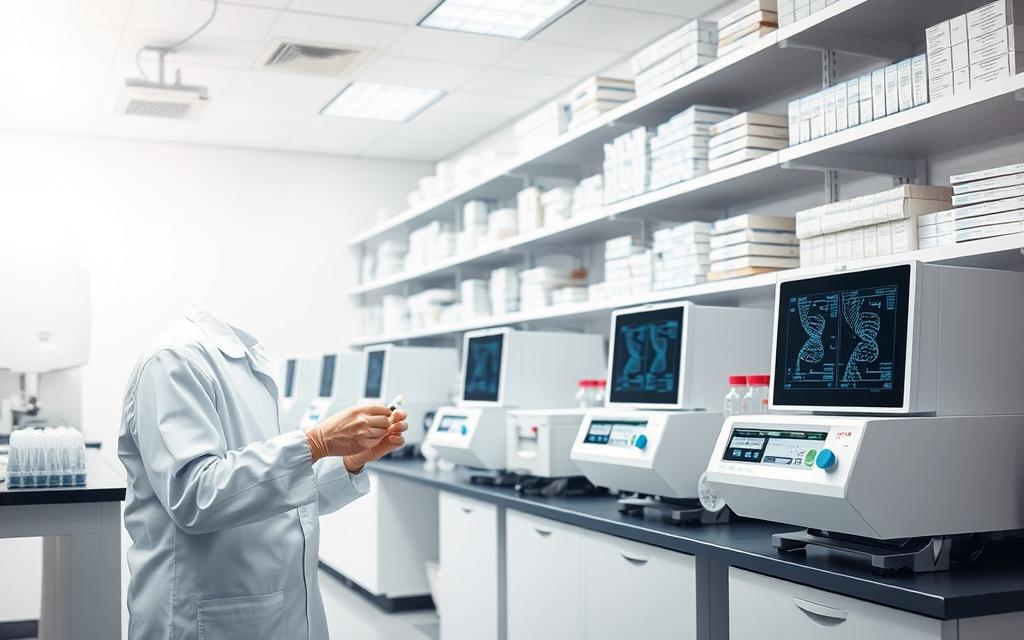
Forensic Technology in DNA Testing
Advanced labs use polymerase chain reaction (PCR) to amplify even tiny genetic samples. This method copies specific DNA markers millions of times, making identification possible from minimal evidence. Accredited facilities follow strict protocols to prevent contamination, ensuring results hold up to scrutiny.
Here’s how it works: suspicious items like clothing or bedding are examined for biological material. Technicians isolate genetic profiles and compare them against reference samples using forensic testing services. If foreign DNA appears, reports detail matches with scientific clarity.
Most kits include swabs for collecting reference material discreetly. You mail everything to certified labs—no visits required. Within days, you’ll receive confidential results explaining whether unknown genetic material was found.
These methods aren’t just for curious partners. They’re also used by legal teams and individuals seeking professional support. By combining cutting-edge science with privacy-focused processes, modern testing delivers answers that empower informed decisions.
Types of Infidelity DNA Tests and Their Insights
Choosing the right DNA test can turn doubts into definitive answers. Modern options range from basic presence checks to detailed genetic comparisons, each designed for specific scenarios. Let’s explore how different testing approaches address unique needs while maintaining privacy and accuracy.
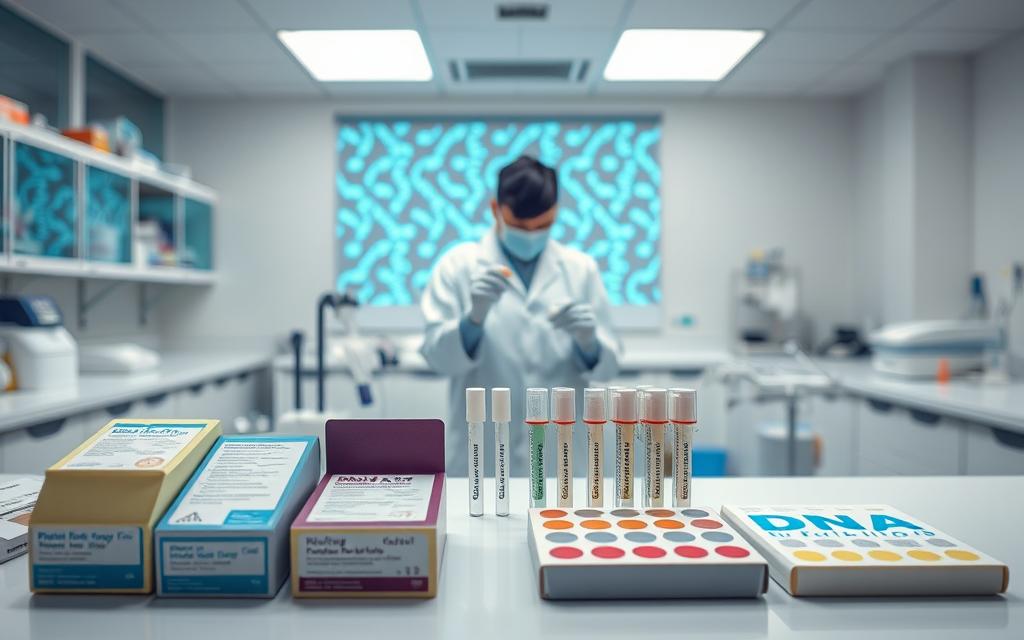
Advanced vs. Basic Testing Options
Advanced DNA tests analyze multiple genetic markers and compare them against reference profiles. These are ideal when you need to confirm whether biological material matches a specific person. For simpler needs, basic kits check for the presence of foreign DNA without detailed comparisons—perfect for initial screenings.
Advanced options often require items like toothbrushes or razors for reference samples. Basic tests work with single items like clothing stains. Both types use accredited labs, but advanced analysis provides conclusive matches rather than general detection.
Specialized Semen and Saliva Checks
Standalone semen detection tests identify protein markers unique to bodily fluids, even if no genetic material remains. Saliva tests detect enzymes found in mouth cells. These options are useful when you need quick confirmation without full DNA testing.
Forensic samples like bedding or personal items are carefully examined in controlled labs. Results clearly state whether traces were found, helping you decide if further testing is needed. Most kits arrive within days of ordering, with online portals delivering confidential reports.
How Forensic DNA Testing Uncovers Hidden Evidence
Forensic science turns everyday items into silent witnesses. From forgotten coffee cups to laundry piles, biological traces hold answers invisible to the naked eye. Proper handling of these materials transforms them into powerful evidence through precise scientific processes.
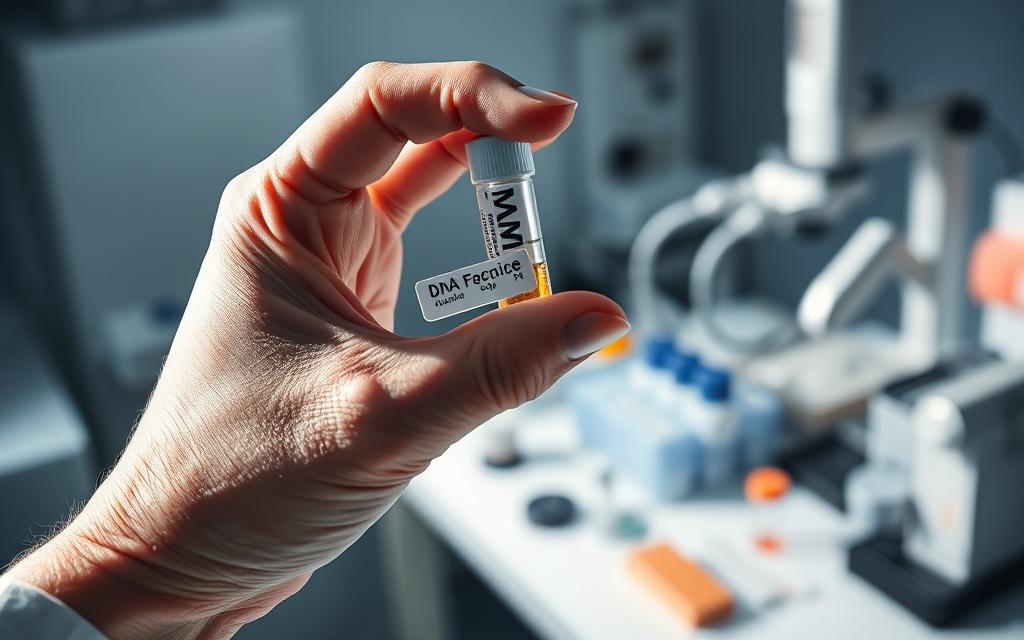
Collection of Special Samples
Successful testing starts with careful collection. Common items include clothing with suspicious stains, hairbrushes with foreign strands, or personal hygiene products. Even old toothbrushes or razors can retain genetic material for months.
Experts recommend using gloves and sterile tools to avoid contamination. Place each sample in separate paper envelopes—plastic traps moisture that degrades DNA. Detailed notes about where and when you found items strengthen the chain of custody.
Laboratory Analysis and Accuracy
At the laboratory, technicians extract DNA using chemical solutions that break down cells. They amplify genetic markers through PCR (polymerase chain reaction), creating millions of copies for clear profiling. This method works on degraded or tiny samples, like faded stains or single hairs.
Accredited labs compare profiles against reference samples to confirm matches. Results show if foreign DNA is present and whether it links to specific individuals. For legal cases, these DNA testing services provide court-admissible reports with 99.9% accuracy rates.
Advanced screenings also detect bodily fluids like semen or saliva through protein markers. Combined with genetic analysis, this creates undeniable evidence—whether resolving fresh concerns or decades-old mysteries.
Choosing the Right Test for Your Unique Situation
Selecting the best DNA test depends on your specific needs and circumstances. Consider these factors to match your situation with the most effective solution.
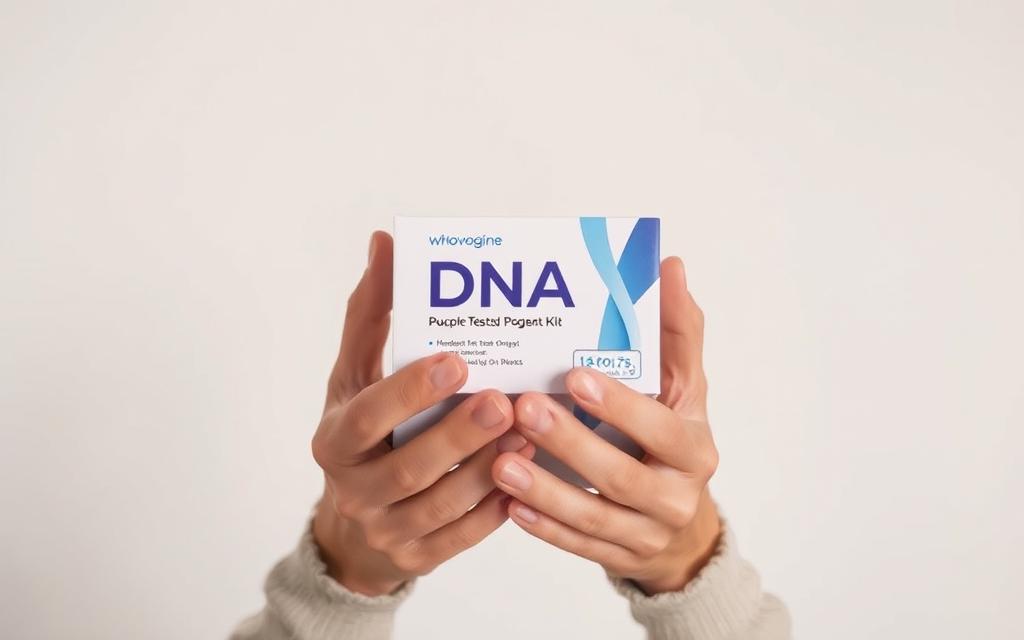
Assessing Different Test Options
Basic test kits work well for initial checks—like confirming foreign DNA presence on clothing. Advanced options compare genetic profiles against specific individuals using 20+ markers. Ask yourself: Do I need general detection or a confirmed match?
Home-friendly kits let you collect samples discreetly. Lab-submitted forensic samples require professional handling for legal cases. Turnaround times range from 3 days for simple checks to 2 weeks for court-admissible reports.
Privacy, Consent, and Legal Considerations
Always verify local laws before testing. Some states require written consent from the person being tested. Reputable labs use encrypted systems to protect your data—look for ISO-certified facilities.
For sensitive cases, consult experts who understand chain-of-custody protocols. They’ll help balance quick collection with proper documentation. Remember: Speed matters, but accuracy and legality matter more.
Interpreting Test Results and Planning Your Next Steps
Your test results hold the key to clarity—here’s how to read them. Labs present findings through detailed DNA profiles showing genetic matches or mismatches. Each report highlights specific markers compared against reference samples, with statistical probabilities often exceeding 99.9% accuracy.
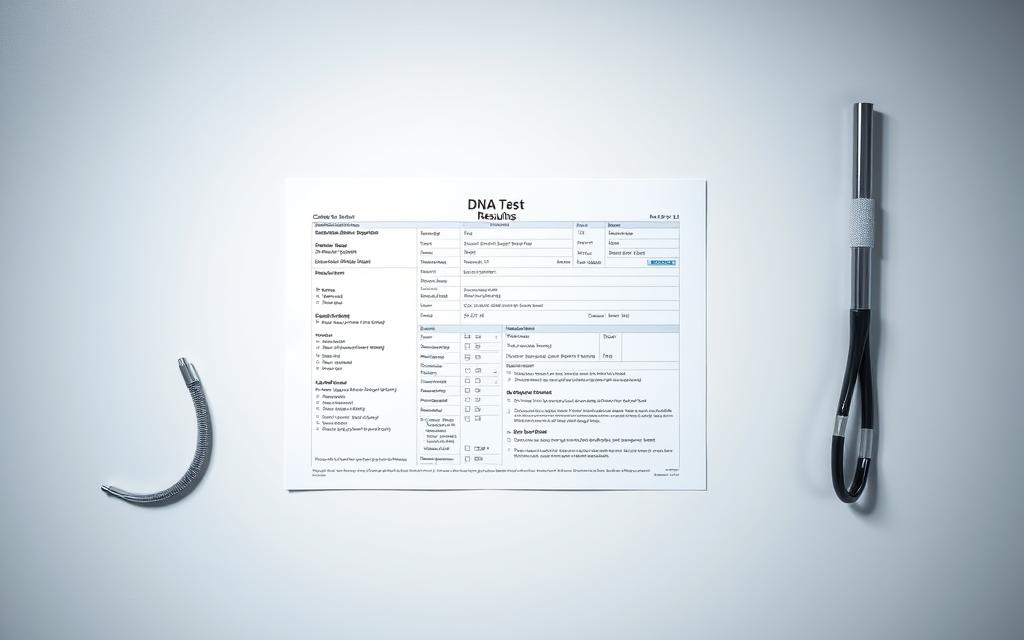
Understanding DNA Profiles and Test Outcomes
Look for terms like “female DNA detected” or “no foreign genetic material” in your report. Probability markers indicate how likely a match exists between compared samples. For example, a 20-marker profile might show a 1-in-10-billion chance of random match.
Positive results typically reveal unknown biological traces linked to another person. Negative outcomes confirm no foreign DNA was found. Always cross-check these findings with physical evidence like clothing stains or unusual items collected earlier.
Guidance for Moving Forward
If results confirm suspicions, consider consulting a therapist or legal advisor. Many labs offer confidential counseling referrals to help process next steps. For unclear cases, retesting with additional samples might provide certainty.
Legal actions may require court-admissible reports from ISO-certified laboratories. Personal decisions—whether rebuilding trust or pursuing separation—benefit from professional support. Remember: Knowledge empowers better choices, regardless of the outcome.
Conclusion
Modern relationships sometimes require modern solutions. The DNA test options we’ve explored—from basic presence checks to detailed profile comparisons—offer discreet paths to clarity. Whether you’re using home kits or professional services, these tools deliver answers through scientific precision.
Collecting samples from everyday items like clothing or personal belongings has never been simpler. Accredited labs analyze genetic material with PCR technology, providing test results within days. Advanced options even detect specific bodily fluids through specialized screenings.
Choosing between types of tests depends on your needs. Basic kits confirm foreign DNA presence, while comprehensive profiles match genetic markers against known references. Legal considerations and privacy protections remain crucial—always verify local regulations before proceeding.
Ordering a reliable kit puts control back in your hands. Clear reports help interpret findings, whether confirming suspicions or easing doubts. With professional guidance and accurate outcomes, you can navigate next steps confidently.
Knowledge is power. By combining cutting-edge science with thoughtful decision-making, these testing approaches help transform uncertainty into actionable truth.
